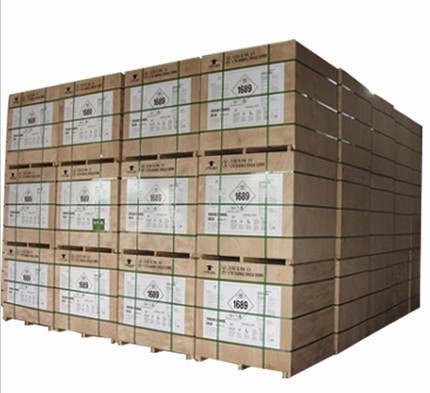Contact us on


Use of Cyanide in the Gold Industry
This document provides a general overview of the use of cyanide in the gold recovery process, and is not intended to be a technical reference on the use of cyanide to recover gold.
Introduction
Gold typically occurs at very low concentrations in ores - less than 10 g/t or 0.001% (mass basis). At these concentrations the use of aqueous chemical (hydrometallurgical) extraction processes is the only economically viable method of extracting the gold from the ore. Typical hydrometallurgical gold recovery involves a leaching step during which the gold is dissolved in an aqueous medium, followed by the separation of the gold bearing solution from the residues, or adsorption of the gold onto activated carbon. After elution from the activated carbon the gold is further concentrated by precipitation or electrodeposition.
Gold is one of the noble metals and as such it is not soluble in water. A complexant, such as cyanide, which stabilizes the gold species in solution, and an oxidant such as oxygen are required to dissolve gold. The amount of cyanide in solution required for dissolution may be as low as 350 mg/l or 0.035% (as 100% NaCN).
Alternative complexing agents for gold, such as chloride, bromide, thiourea, and thiosulfate form less stable complexes and thus require more aggressive conditions and oxidants to dissolve the gold. These reagents present risks to health and the environment, and are more expensive. This explains the dominance of cyanide as the primary reagent for the leaching of gold from ores since its introduction in the later part of the 19th century.
Manufacture, Transport and Storage of Cyanide Approximately 1.1 million metric tons of hydrogen cyanide are produced annually worldwide, with approximately 6% used to produce cyanide reagents for gold processing. The remaining 94% is used in industrial applications including production of plastics, adhesives, fire retardants, cosmetics, pharmaceuticals, food processing and as an anti-caking additive for table and road salts.
Cyanide is manufactured and distributed for use in gold mining industries in a variety of physical and chemical forms, including solid briquettes, flake cyanide and liquid cyanide. Sodium cyanide is supplied as either briquettes or liquid, while calcium cyanide is supplied in flake form and also in liquid form. The strength of bulk cyanide reagents vary from 98% for sodium cyanide briquettes, 44-50% for flake calcium cyanide, 28-33% for liquid sodium cyanide and 15-18% for liquid calcium cyanide. The product strength is quoted on a molar basis as either sodium or calcium cyanide.
The form of cyanide reagent chosen for use is typically dictated by availability, means of transport, distance from source and cost. Large operations close to manufacturing facilities typically prefer liquid cyanide, but due to the risk of transporting liquids over long distances and the associated cost, smaller and more remote operations use solid forms of cyanide.
Where liquid cyanide is used, it is transported to the mine by tanker truck or rail car and is off-loaded into a storage tank. The truck or rail car may have a single or double walled tank, and the location and design of the discharge equipment varies by vehicle.
Solid briquette or flake cyanide is transported to the mine in drums, plastic bags, boxes, returnable bins and ISO-containers. Depending on how the reagent is packaged, the mine will design and construct the necessary equipment to safely dissolve the solid cyanide in a high-pH solution. The pH value of cyanide solutions during dissolution must be maintained above pH 12 to avoid the volatilization of hazardous hydrogen cyanide (HCN) gas. The resulting cyanide solution is then pumped to a storage tank prior to introduction into the process.
The cyanide solution is fed from the storage tank into the metallurgical process stream in proportion to the dry mass of solids in the process stream. The feed rate of cyanide is controlled to maintain an optimum cyanide level as demanded by the metallurgy of the ore being treated.
A mine's inventory of bulk cyanide reagent is dictated by the requirements to maintain continuous operations, and to limit the frequency of off-loading events, which are regarded as safety critical events.
Although the forms of cyanide vary, once introduced into the process, the technologies used for gold recovery are the same.
For general enquiries call our Customer Service Centre on
For website enquiries call our eBusiness Support on or send an email